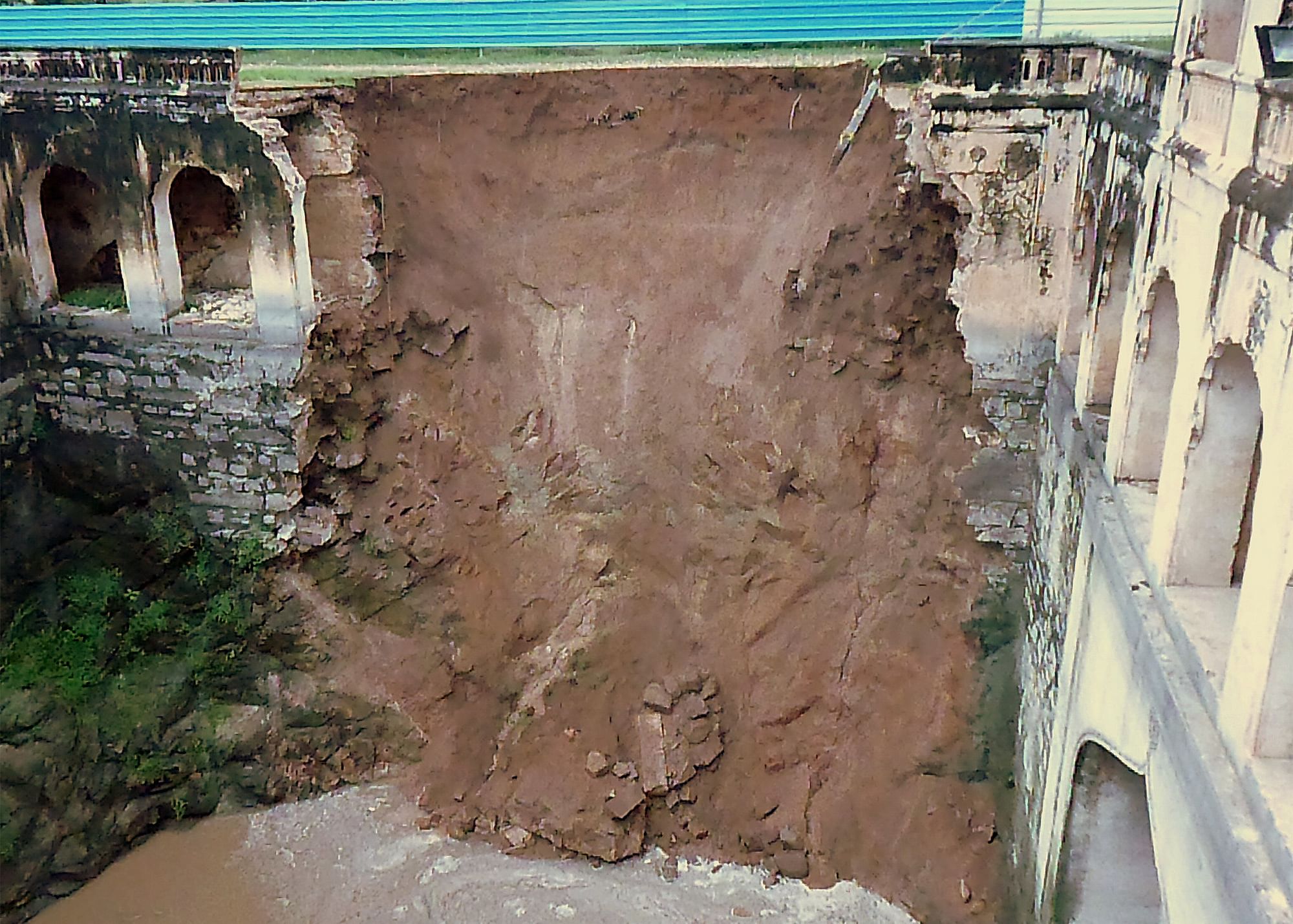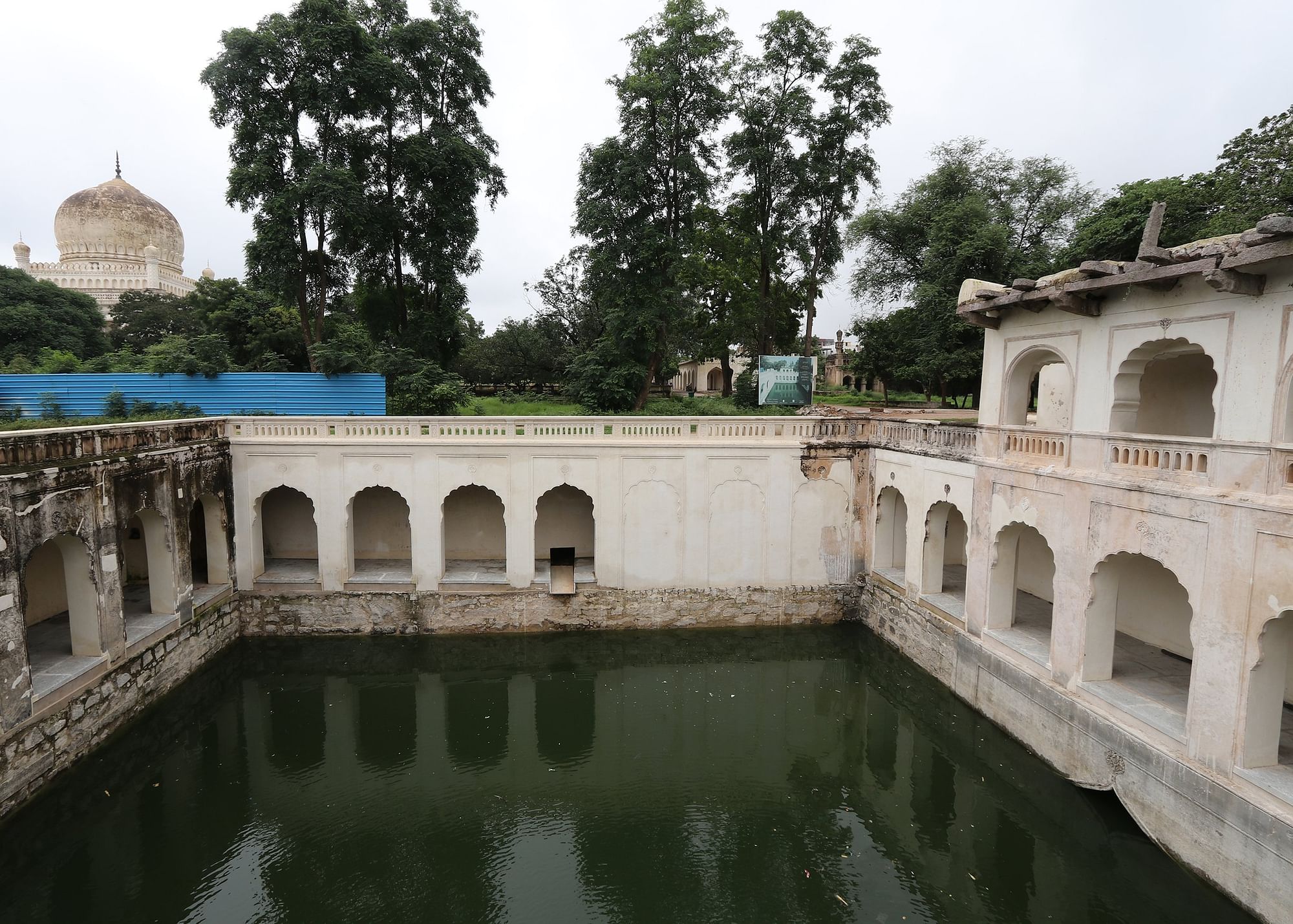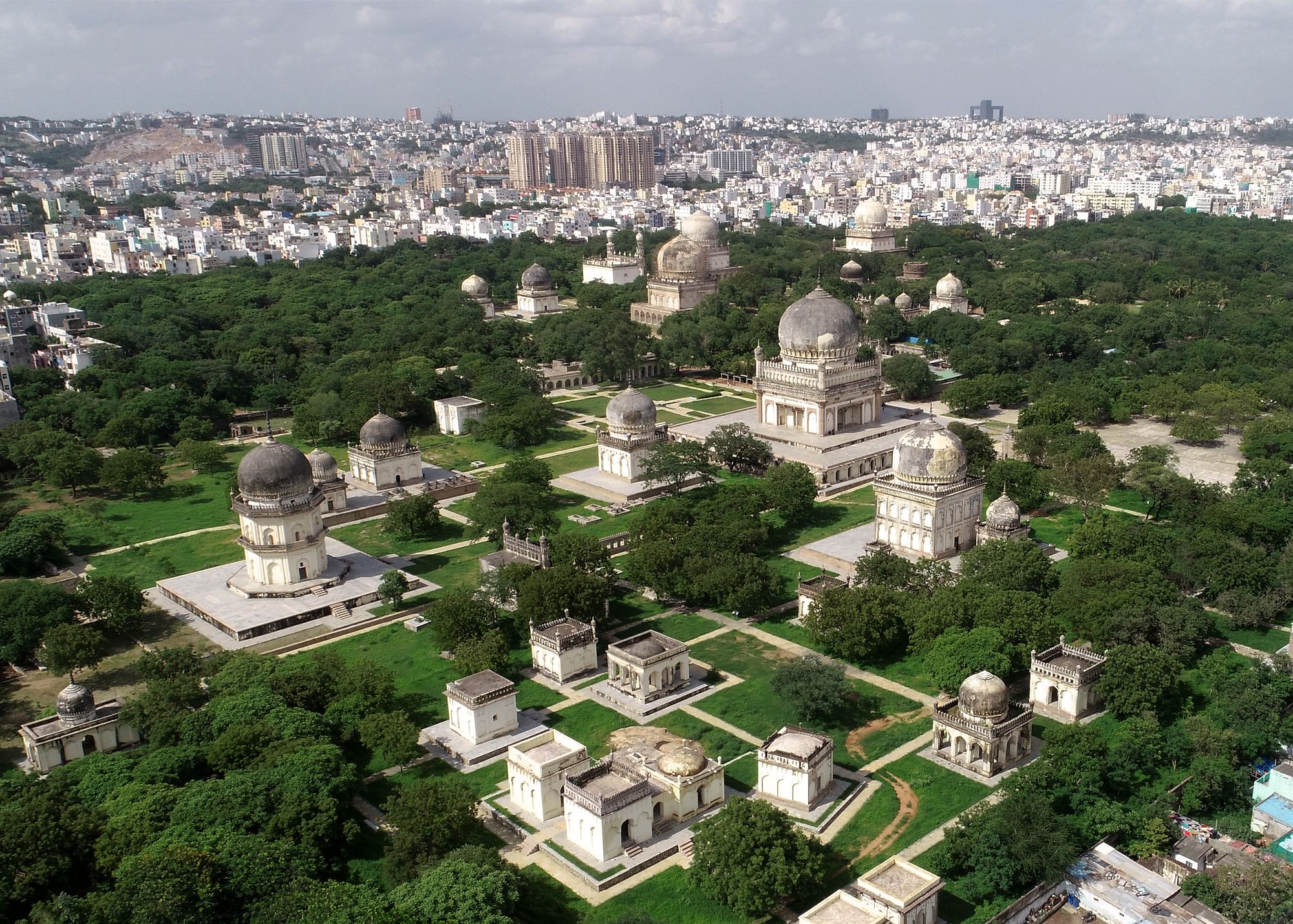Multiple agencies and universities from across the globe came together to restore and revive the ‘baolis’ (stepwells) and other structures in the Qutb Shahi Heritage Park.
Here’s how they did it and how that can be a model for conservation elsewhere in India, especially for heritage water storage structures.
With the passage of time the structures and the stepwells in the Qutb Shahi Heritage Park in Telangana had gone into disuse. They were filled up with mud and wild growth of shrubs changing the site into an area of ruins.
At the Heritage Park, there are the Badi Baoli, Idgah Baoli, Western Baoli, Eastern Baoli, Hammam Baoli and the Bagh Baoli.
The Aga Khan Trust for Culture (AKTC), with the help of Tata Trusts, German Embassy and the US Ambassador’s Fund for Cultural Preservation has not only restored the tombs and revived the step wells, which were in ruins, with great effort, the initiative is now attracting visitors, including foreign visitors, in good number.
The project
“The conservation works at the Qutb Shahi Heritage Park coupled with landscape restoration, aim to restore the grandeur of the ensemble. On completion of the project in 2025, it can be expected for visitor numbers to increase manifold to experience this site along with the adjoining Golconda fortifications” said Ratish Nanda, chief executive officer of AKTC.
Conservation works have required removal of cement layers, rebuilding collapsed portions of monuments, restoration of stucco plaster patterns in traditional lime mortar — mixed with traditional additives such as aloe vera, jaggery, crushed lentil, wood-apple pulp, amongst others.
Master craftsmen have clocked lakhs of man-days and almost 75 monuments now stand conserved.
Landscape works similarly have been based on exhaustive archival research, excavations and revealed enclosed gardens.
On the stepwells front, ground levels have been restored to what they were. This, in turn, has to led to revival of the step-wells with over 20 million litres of rain water being collected annually now.



The main challenges in undertaking this work for the Aga Khan Trust for Culture here, have been the quantum of works, as well as, litigation by vested interests seeking ownership of the land — with over 80 court cases filed in the Wakf Tribunal, the High Court and even in the Supreme Court.
As a precursor to the conservation works at the Qutb Shahi Heritage Park, the architectural documentation and condition assessment of the structures was completed using manual and computer aided drawings, and photography.
The complete list of heritage structures inside the historical site was compiled into an inventory.
Further, archival research and archaeological excavations were carried out to detail the landscape master plan. A holistic conservation plan was then prepared with a multi-disciplinary team and submitted to the government of Telangana.
Consequently In 2013, Department of Heritage Telangana, Quli Qutb Shah Urban Development Authority and the AKTC signed an MoU enabling conservation and landscape restoration of the site.
A stay order was put by Wakf Tribunal for a period of one year, which brought the works to a halt. However, emergency repair works of Badi baoli, and other structures were nonetheless carried out.
Several assessment and scientific investigations were carried out to know about the minutest details about the site. The structural assessment was carried out by renowned expert Stuart Tappin.
The samples of the lime historically used on the Qutb Shahi edifices were sent to universities for inspecting the exact composition, so that it can be replicated for the restoration works.
Similarly, the glazed tiles found at Mohammad Qutb Shah’s mausoleum were also tested at University of Turin, Italy, for constituents and glazing components.
Since 2013, several international peer reviews for conservation, landscape and archaeological works have been conducted to discuss ongoing works and seek the opinion of diverse stakeholders — archaeologists, conservation architects, engineers, administrators, historians, authors, amongst others.
These peer reviews have not only informed the project’s required works but also provided guidance for an approach to the conservation, consolidation and presentation of the monuments for any future undertakings.
AKTC also facilitated a series of peer reviews by noted international and national conservation experts, from reputed global heritage organizations like ICCROM and ICHHTO, to ensure acquiescence with the globally accepted conservation norms.
The site is broadly divided into three zones namely, Visitor Zone; Core Heritage Zone and Ecological Zone.
The visitor zone consists of the recreational space for visitors and is situated south east of the site in the Deccan Park.
The core heritage zone consists of the 100+ Qutb Shahi monuments and the visitor zone acts as a buffer to the influx of the local tourists from the historical area.
And lastly the ecological zone, situated in the north west and south east of the site, is a treasure trove of the diverse deccan flora and fauna with over 8000 trees planted — belonging to 72 species of which 19 are fruit bearing species of trees.
These species are amla, lemon, orange, mosambi, pomegranate, guava, jackfruit, bel, ramphal, sitaphal, star fruit, chikoo, jamun, mango, badam, cashewnut and coconut.
The water requirement for the various conservation, landscape and construction works is also enormous.
At the commencement of the project water was being bought externally, however, with the conservation of the six baolis and two wells situated at the site the requirements are now being fulfilled internally.
‘Earlier we had to buy water in tankers for our ongoing work. But now after the revival of baolis, we are not buying water anymore. All our requirements for the construction work and gardening purposes are being met from these balois’, said Ganesh Reddy, AKTC operations manager.
The conservation of the baoli required consolidating masonry walls and desilting to restore the original capacity. The conservation of these water reservoirs has enabled us to save over 20 million liters of water in the year 2022, said Nanda.
The water from baolis are now being used to maintain fruit-bearing gardens that are now blooming across the heritage park. The grounds of the heritage site is sloped in such a way that rainwater flows to the baolis.
The conservation of the historic monuments also includes removal of 20th century cement plaster from the wall surfaces. Around 2,000 cubic meters of cement has been removed from the site and replaced with original lime mortar and concrete.
Earth levels have also been altered over time, which have been restored back to original levels now. The surplus earth removed has been utilized at various landscape works such as the terraced garden and filling below pathways, making the Qutb Shahi Heritage park a net zero waste site.
Since the conservation work at the site is in the last phase, the majority of the heritage zone is ready with pathways and other visitor amenities. This has led to a 20-25 per cent increase in visitor footfall to 1,90,000 in the year 2022.
Visitors coming to the heritage site are expected to have rich experience and the whole exercise can be a model for conservation elsewhere in India, especially for heritage water storage structures in other parts of southern India.


